Для работы проектов iXBT.com нужны файлы cookie и сервисы аналитики.
Продолжая посещать сайты проектов вы соглашаетесь с нашей
Политикой в отношении файлов cookie
И Windows 10, и Windows 11 обладают крайне аскетичным набором функций, когда речь заходит о передаче звука по Bluetooth. Штатными средствами определить используемый операционной системой Bluetooth-кодек не получится, тем более не получится найти где-либо в интерфейсе Windows кнопку «поменять кодек». В этой статье мы разберемся, каким образом можно определить активный кодек, а также рассмотрим способы переключения и изменения параметров Bluetooth-кодеков в Windows.
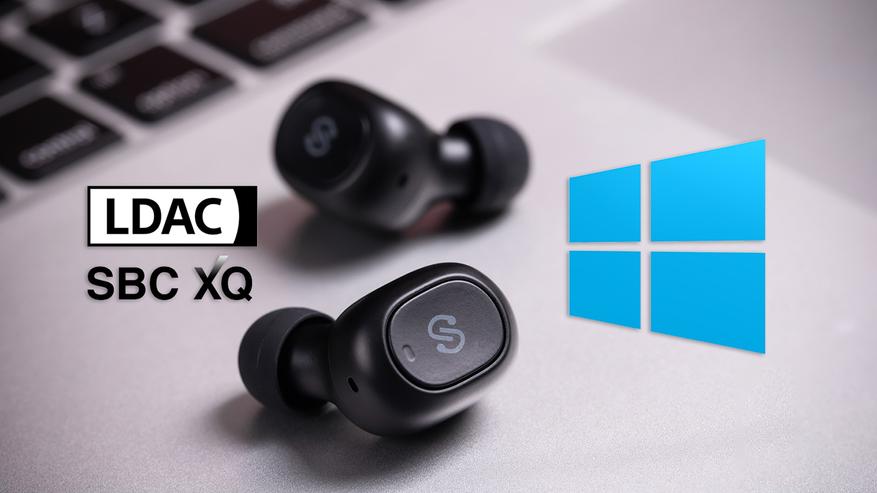
Содержание
- Какие кодеки поддерживает Windows
- Как увидеть используемый кодек
- Как поменять выбранный системой Windows кодек
-
- Как переключить Windows 11 с AAC на aptX (бесплатно)
- Как добавлять / модифицировать кодеки и переключаться между ними (платно)
-
- Повышаем битрейт SBC до 600 кбит/с и выше (SBC-XQ)
Windows 11 нативно поддерживает кодеки SBC, aptX и AAC, также в этом году в свежих устройствах начала появляться поддержка кодека LC3. В Windows 10 реализована поддержка SBC и aptX, а AAC доступен в инсайдерских билдах. При выборе кодека Windows 11 отдает предпочтение AAC. Если подключаемое устройство не поддерживает данный кодек, тогда выбор падает на aptX, а SBC является кодеком «последней надежды».
Windows 10 предпочитает aptX, а SBC является запасным вариантом. Также существует способ подружить Windows 10/11 с кодеками aptX HD, aptX Low Latency и LDAC, но об этом чуть позже.
Чтобы понять, какой Bluetooth-кодек использует Windows для передачи аудио, устанавливаем программу Bluetooth Tweaker. Это платное ПО, но в течение 7 дней можно пользоваться бесплатной демоверсией.
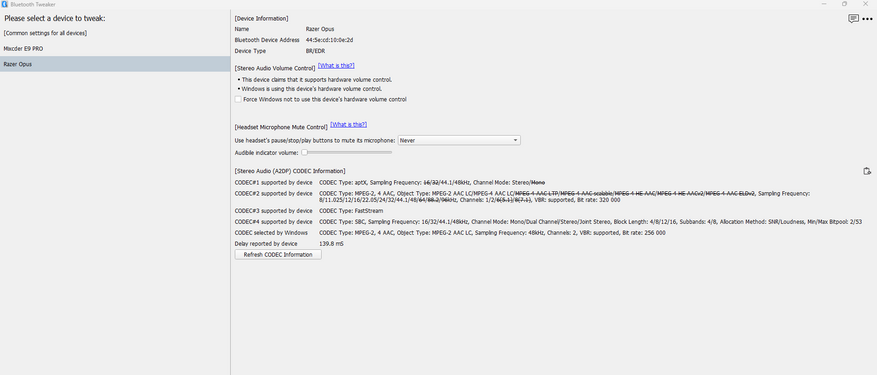
В окне программы мы видим перечень кодеков, с которыми может работать конкретное устройство (в данном случае наушники Razer Opus), а также тот кодек, которому отдала предпочтение Windows (в моем случае AAC 256 кбит/с).
Обычный кодек SBC сегодня мало кто считает лучшим решением для беспроводной передачи аудио. «Модифицированный» SBC, он же SBC-XQ — совсем другое дело, но об этом речь пойдет позже. Итак, большинство пользователей Windows 10 используют aptX, если их наушники его поддерживают, или SBC, если нет. Тут никаких проблем. А вот Windows 11 обычно предпочитает кодек AAC, да зачастую ещё и со сравнительно низким битрейтом в 256 кбит/с (вместо максимально возможного для этого кодека 320 кбит/с), в то время как на aptX можно получить более солидные 384 кбит/с.
Пользователь reddit с никнеймом BugMuzzy нашел бесплатный способ переключения кодека в Windows 11 через редактор реестра.
- Для начала следует убедиться, что ваша модель наушников сама по себе поддерживает кодек aptX, в противном случае после выполнения следующих действий Windows 11 будет использовать кодек SBC.
- Открываем редактор реестра и переходим по пути HKEY_LOCAL_MACHINE\SYSTEM\CurrentControlSet\Services\BthA2dp.
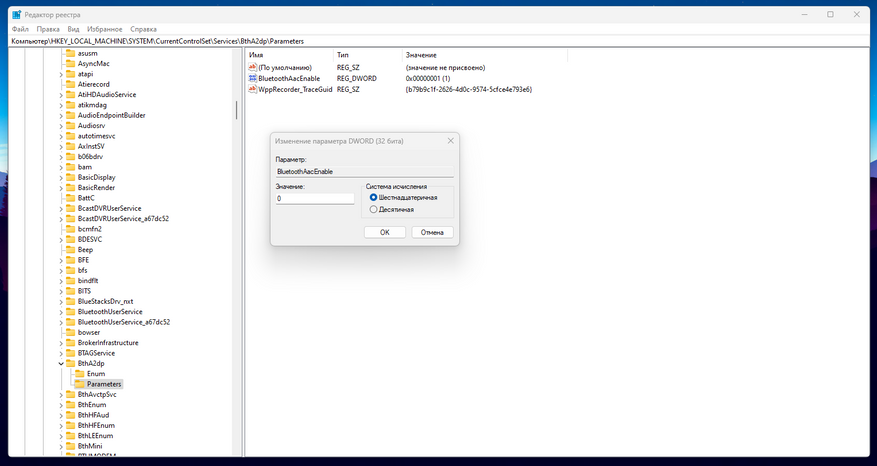
- Создаем раздел Parameters (если его нет по указанному пути) и в нем создаем параметр BluetoothAacEnable, которому присваиваем значение 0. После этого в настройках Windows выключаем и обратно включаем Bluetooth, заново подключаемся к наушникам (или другой используемой акустике), и теперь вместо AAC будет использоваться кодек aptX. Убедиться в этом можно с помощью упомянутой ранее утилиты Bluetooth Tweaker.
Следующий способ связан с использованием альтернативного драйвера A2DP от создателей Bluetooth Tweaker. Он также поставляется с 7-дневным триалом, так что оценить все его прелести можно и бесплатно, но для продолжительного использования понадобится приобрести лицензию.
Что умеет этот альтернативный Bluetooth стек:
- Добавляет поддержку кодеков aptX HD, aptX LL и LDAC;
- Позволяет в любое время переключаться между любыми кодеками отдельно для каждого устройства воспроизведения;
- Позволяет менять различные параметры для каждого из кодеков (см. скриншоты), что особенно важно для SBC и LDAC.
Также альтернативный драйвер автоматически переключает кодек AAC в вариант с битрейтом 320 кбит/с. В моем случае Win 11 использовала AAC 256 кбит/с, в то время как наушники поддерживают и 320 кбит/с. После установки альтернативного драйвера битрейт автоматически увеличился до 320 кбит/с. В этом можно убедиться с помощью утилиты Bluetooth Tweaker, см. скрин ниже.
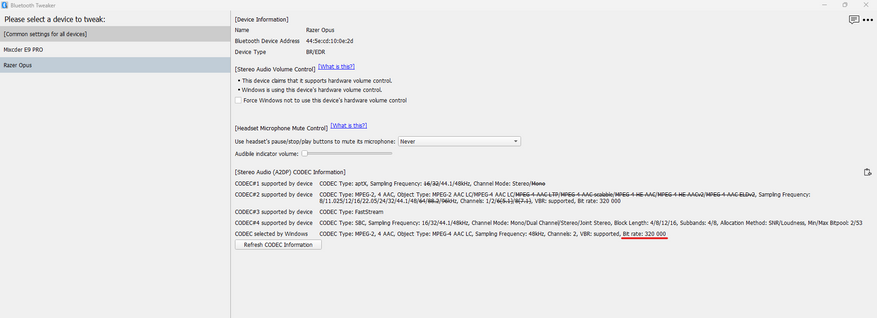
Едва ли не самая «вкусная» функция альтернативного драйвера A2DP — это возможность гибко настраивать кодек SBC, превращая его в достойную альтернативу aptX HD или даже LDAC. Переопределяя битпул, можно поднять битрейт кодека SBC до значений свыше 1000 кбит/с и улучшить качество звука в устройствах, не имеющих поддержки современных «премиальных» кодеков.
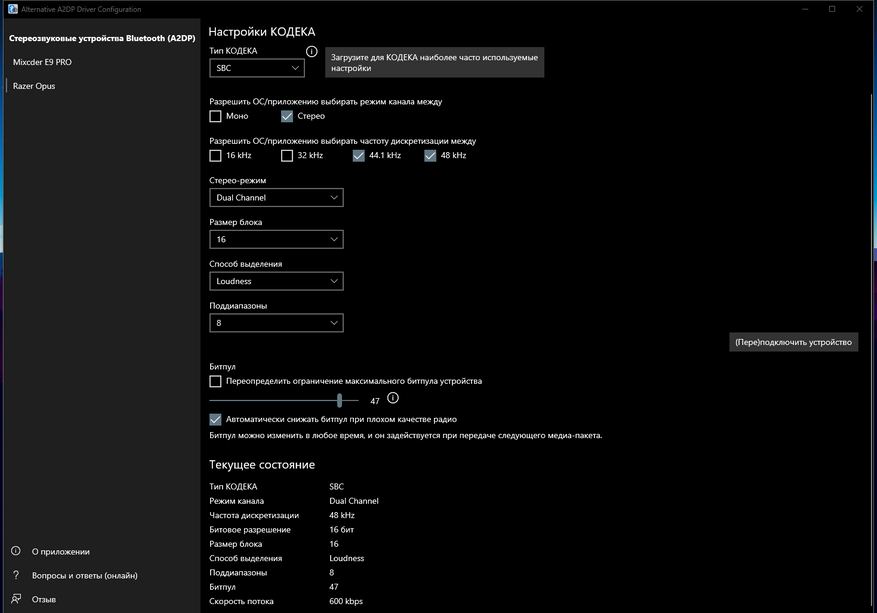
Следует понимать, что чем выше установленный битрейт, тем хуже стабильность сигнала в сложных условиях. Здесь всё зависит от конкретного сетапа, и у некоторых юзеров получается на практике использовать SBC с битрейтом 1100 кбит/с. В целом оптимальным по качеству звука/стабильности сигнала для SBC-XQ принято считать значение 551 кбит/с либо 600 кбит/с (в зависимости от частоты дискретизации — 44.1 кГц либо 48 кГц) в режиме Dual Channel. О причинах этого можно почитать в обстоятельной статье на Хабре.
Сейчас на главной
Новости
Публикации

Наверняка каждый хоть раз видел трещину — на стекле, асфальте или старой чашке. Иногда это просто досадная мелочь, а иногда — предвестник серьезной катастрофы. Мосты рушатся,…

На карте России множество рек. Волга, Обь, Лена, Енисей, Дон, Иртыш, Печора… Каждая из них имеет своё значение, свои богатства и свои легенды. Но если говорить о настоящем рыбном изобилии, о…

Когда слышишь слово «акула», воображение рисует нечто внушительное. Огромные плавники, челюсти, полные зубов, тень под водой, от которой хочется выскочить на берег. Белая акула, тигровая,…

Представьте: поздний вечер, вы идете по темной улице или лесной тропинке, и вдруг луч вашего фонарика выхватывает из мрака два ярко светящихся огонька. Или, может, вы пытались сфотографировать…

На раскалённых равнинах Африки громыхает рёв льва, мелькают пятна леопарда и сверкают молнии гепарда, но полосатый силуэт тигра здесь не появлялся никогда. Почему самый крупный хищник кошачьего…

В 2012 году глубоко под землей, на границе Франции и Швейцарии, произошло событие, которое всколыхнуло мир физики. Внутри 27-километрового кольца Большого адронного коллайдера (БАК) столкнулись…
How to Check Bluetooth Codec in Windows 11/10
Bluetooth has become an integral part of our daily lives, allowing us to connect various devices wirelessly, from headphones and speakers to keyboards and mice. One crucial aspect of Bluetooth connections that is often overlooked is the codec being used. The codec (coder-decoder) determines how audio signals are compressed and transmitted over Bluetooth, impacting sound quality and latency. In this article, we will explore how to check the Bluetooth codec in Windows 10 and 11, ensuring you have all the necessary information to maximize your audio experience.
Understanding Bluetooth Codecs
Before diving into the method of checking your Bluetooth codec, it’s essential to understand what exactly Bluetooth codecs are. A codec is essentially a software or hardware tool that compresses and encodes data for transmission and decoding. In the context of Bluetooth audio, codecs influence the audio quality, latency, and overall performance of your devices.
There are several Bluetooth codecs available, including but not limited to:
-
SBC (Subband Coding): The most common codec for Bluetooth, supported by almost all devices. While it is universally compatible, its performance may be limited in terms of audio quality.
-
AAC (Advanced Audio Codec): Widely used in Apple devices, AAC offers better quality than SBC at lower bit rates, making it suitable for streaming music.
-
aptX: This codec is known for providing high-quality audio without significant latency. It’s widely supported by many Bluetooth audio devices, especially for high-fidelity audio.
-
aptX HD: An upgraded version of aptX that supports higher resolution audio, providing a more immersive listening experience.
-
LDAC (Low Latency Audio Codec): Developed by Sony, LDAC can transmit more data than standard codecs, allowing for higher quality audio over Bluetooth.
-
LHDC (Low Latency High Definition Codec): A newer codec that enables high-definition audio streaming with low latency.
The Importance of Checking Bluetooth Codec
Understanding the Bluetooth codec in use can be essential for several reasons:
-
Audio Quality: Different codecs offer varying levels of audio quality. Knowing the codec can help you make informed decisions on which device to use for your listening preferences.
-
Latency Issues: Certain codecs are optimized for low latency, which is crucial when watching movies, gaming, or using voice communication. Using the wrong codec can lead to noticeable delays between video and audio.
-
Compatibility: Not all devices support every codec. If you are experiencing problems with audio quality or connection stability, checking the codec may reveal compatibility issues.
-
Maximizing Device Capability: If you own high-quality headphones or speakers, knowing the codec in use allows you to exploit their full potential.
Now that we understand the importance of Bluetooth codecs, let’s proceed with the steps to check which codec is being used in Windows 10 and 11.
Checking Bluetooth Codec in Windows 10/11
In Windows, the process of checking Bluetooth codecs has seen improvements over the years, particularly with Windows 11. Below are step-by-step instructions to check your Bluetooth codec in both Windows 10 and 11.
Method 1: Using Bluetooth Settings
-
Ensure Bluetooth is Enabled:
- First, make sure that Bluetooth is enabled on your computer.
- Go to
Settingsby clicking on the Start menu and selecting the gear icon. - Click on
Devices, then selectBluetooth & other devices. - Ensure that the Bluetooth toggle is switched to «On.»
-
Connect Your Bluetooth Device:
- If you haven’t already, make sure your Bluetooth audio device (headphones or speakers) is connected to your computer.
- You can add a device by clicking on
Add Bluetooth or other device, selectingBluetooth, and following the instructions.
-
Access the Bluetooth Properties:
- Once your device is connected, prepare to check its codec.
- Press
Windows + Xor right-click the Start button to open the Quick Link menu. - Select
Device Manager.
-
Locate the Bluetooth Device:
- In Device Manager, expand the
Bluetoothsection. - Find your connected Bluetooth audio device. It might be listed with the manufacturer’s name, for example, «Sony WH-1000XM4.»
- In Device Manager, expand the
-
Access Device Properties:
- Right-click on your Bluetooth audio device and select
Properties. - Switch to the
Advancedtab.
- Right-click on your Bluetooth audio device and select
-
Check the Codec:
- In the Advanced tab, look for the codec information. Depending on your Windows version and device, you may see a field indicating which codec is currently in use.
Method 2: Using the Bluetooth Audio Device’s Application
Many modern Bluetooth audio devices come with proprietary applications from the manufacturers, which may display detailed audio specifications, including the codec being used.
-
Download the Manufacturer’s App:
- Check if your Bluetooth audio device has a specific app. For example, Sony has the Headphones Connect app, Bose has the Connect app, and others have their equivalents.
- Download and install the app from the Microsoft Store or the manufacturer’s official website.
-
Connect Your Device:
- Follow the app’s instructions to connect to your Bluetooth audio device.
-
Access the Codec Information:
- Once connected, navigate through the app’s settings or information sections. Many apps provide codec information directly, allowing you to see what codec is currently in use.
Method 3: Using Third-Party Tools
If the above methods do not provide the codec information you need, several third-party tools can help. Programs like Bluetooth Tweaker and Bluetooth Explorer allow users to inspect Bluetooth settings more closely.
-
Download and Install a Bluetooth Tool:
- Search for reputable Bluetooth management software online (e.g., Bluetooth Tweaker) and follow the download and installation instructions.
-
Connect Your Device and Open the Tool:
- Once installed, open the Bluetooth tool and ensure that your Bluetooth audio device is connected.
-
Navigate to Codec Information:
- Explore the tool’s interface to find information on codecs. Each tool will vary, but most will have a section dedicated to device properties, including codec details.
Troubleshooting Lack of Codec Information
Sometimes, you may not see any codec information through the methods mentioned. Here are some common reasons and potential solutions:
-
Incompatible Driver:
- Ensure your Bluetooth drivers are up-to-date. You can check for updates in Device Manager by right-clicking your Bluetooth adapter and selecting
Update driver.
- Ensure your Bluetooth drivers are up-to-date. You can check for updates in Device Manager by right-clicking your Bluetooth adapter and selecting
-
Device Compatibility:
- Not all Bluetooth devices support all codecs. Ensure your device supports high-quality codecs like aptX or LDAC if you’re looking for better audio.
-
Windows Version:
- Ensure you’re running the latest version of Windows. Some updates improve Bluetooth capabilities, including codec support.
Conclusion
Understanding and checking your Bluetooth codec in Windows 10 and 11 can significantly enhance your audio experience. By knowing which codec is in use, you can make informed choices about which devices to use, maximizing the capabilities of your headphones or speakers. Whether you’re using built-in settings, manufacturer-specific applications, or third-party tools, the steps outlined in this article should serve as an efficient guide to ensuring you’re getting the best audio quality possible.
In summary, while Bluetooth is a fantastic technology that offers convenience and versatility, it’s crucial to understand the nuances behind it, including codecs. Improved sound quality and reduced latency can transform your multimedia experiences, whether you’re streaming music, gaming, or enjoying a movie. So take the time to check your Bluetooth codec, optimize your setup, and enjoy the full potential of your audio devices.
This is a follow-up to my earlier article Bluetooth Audio Quality & aptX on Windows 10, based on a comment by reader eluxe.
Windows makes it unnecessarily hard to identify the audio codec used by the Bluetooth A2DP profile, but there is a way. This post shows how to check if your connection makes use of aptX, LDAC, or some other more advanced codec, or if it falls back to SBC.
The Procedure
The process only involves two steps:
- Collecting ETL logs with Windows Performance Recorder (WPR)
- Processing the logs with Windows Performance Analyzer (WPA)
Collecting Bluetooth ETL Logs With WPR
- Open an elevated PowerShell prompt (i.e., with admin rights)
- Navigate to a temporary directory
- Download Microsoft’s custom Bluetooth tracing recording profile for WPR:
wget https://github.com/Microsoft/busiotools/raw/master/bluetooth/tracing/BluetoothStack.wprp -outfile .\BluetoothStack.wprp - Start the trace:
wpr.exe -start BluetoothStack.wprp!BluetoothStack -filemode - Start playing audio via your Bluetooth device
- Stop the trace:
wpr.exe -stop BthTracing.etl - You should now have a file called
BthTracing.etl
Source and more information: Microsoft’s busiotools GitHub repository
Processing Bluetooth ETL Logs With WPA
Double-click the trace file BthTracing.etl to open it in Windows Performance Analyzer (WPA). You should see a window that looks similar to this:
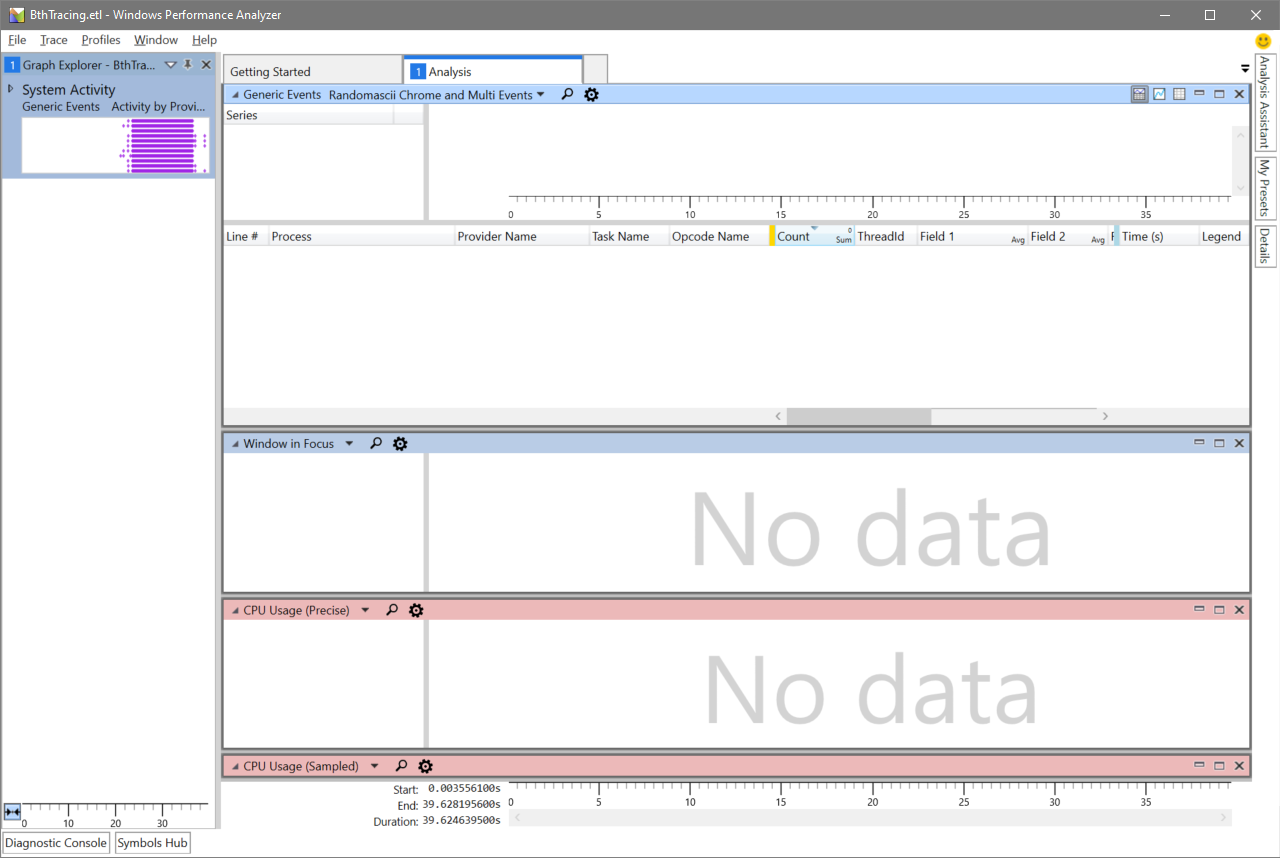
Close all the default charts and tables in the main area by clicking the x in the upper right corner. Then double click the preview chart below System Activity in the upper left corner. The window should now look like this:
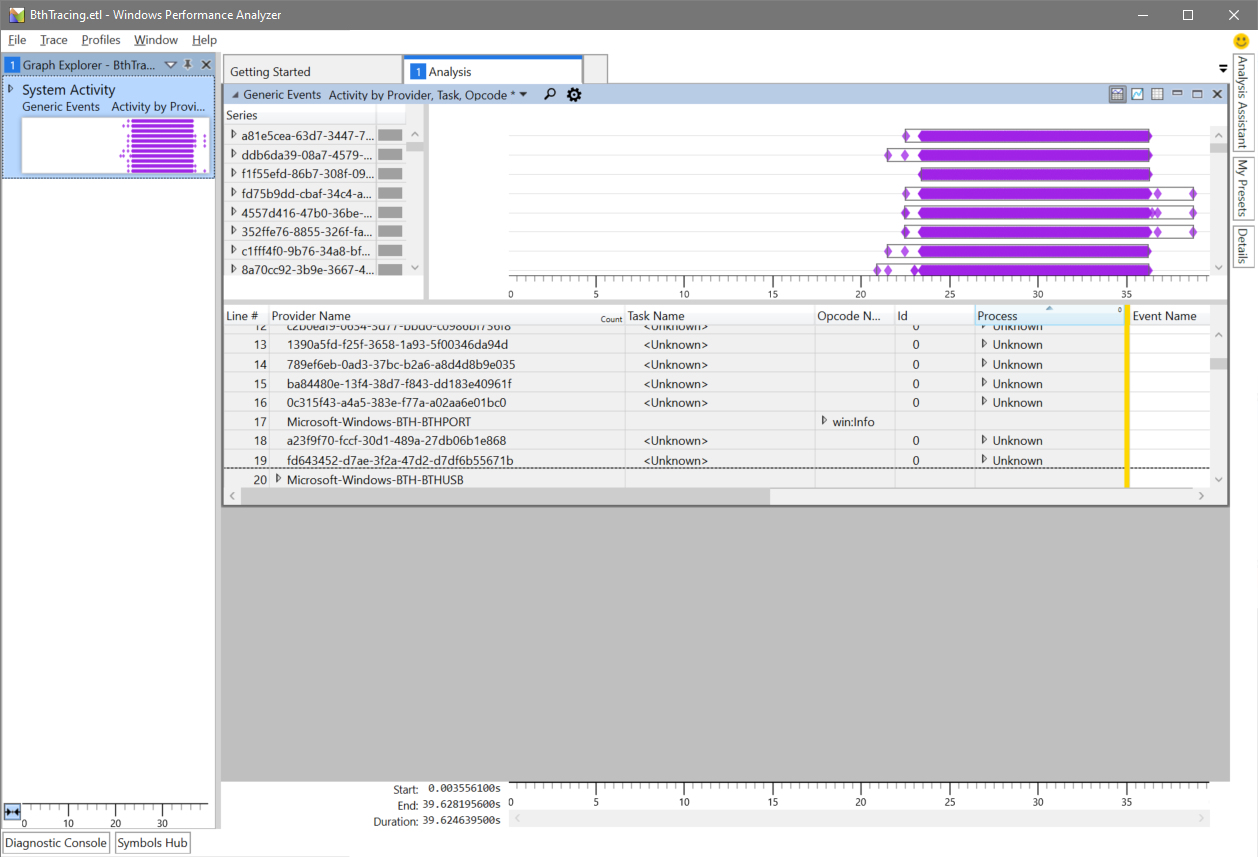
Click the loupe symbol and enter a2dpstreaming:

After clicking Find all you should see two events highlighted in the table:
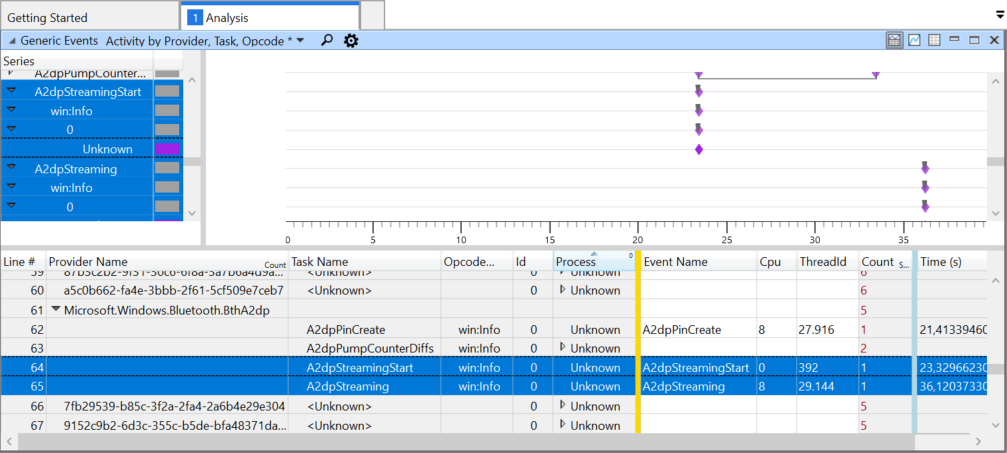
We are only interested in the second event with the task name A2dpStreaming. Unfortunately, the default columns do not have any meaningful information for us, and WPA makes it really quite hard to get to the interesting fields.
Right-click the column header and select Open View Editor:
De-select the fields Id, Process, Cpu, and ThreadId. From the left column drag and drop the fields 4 through 6 (Field 4, Field 5, Field 6) to the main area below the golden bar. It should look like this:
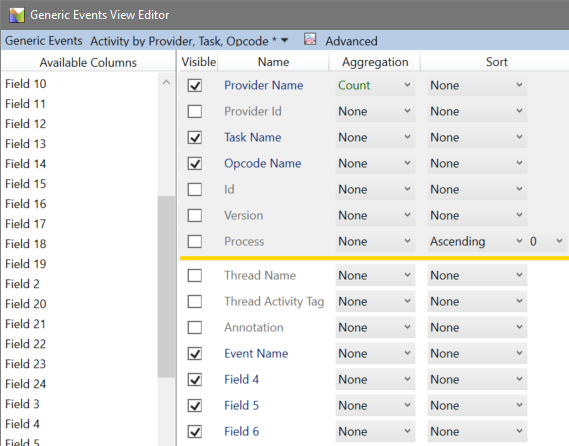
Rearranging the columns a bit for readability we finally see the information we need:

Interpreting the Result
All the fiddling around with WPA had the sole purpose of revealing the data of three fields:
A2dpStandardCodecId(field 4)A2dpVendorId(field 5)A2dpVendorCodecId(field 6)
The following table shows the values from my Bluetooth connection, both in decimal (as displayed by WPA) and in hexadecimal:
| Field | Value (dec) | Value (hex) |
|---|---|---|
| A2dpStandardCodecId | 255 | 0xFF |
| A2dpVendorId | 79 | 0x004F |
| A2dpVendorCodecId | 1 | 0x01 |
A complete list of Bluetooth vendor IDs can be found on the website of the Bluetooth SIG. We should not need it, though, because, luckily, an author called ValdikSS already compiled the relevant information in their excellent article Audio over Bluetooth: most detailed information about profiles, codecs, and devices. I’ll copy just the information required to interpret the data we collected.
A2DP has three types of codecs: mandatory, optional, and vendor-specific.
Mandatory A2DP Codecs
| Standard codec ID | Vendor ID | Vendor codec ID | Codec name |
|---|---|---|---|
| 0x00 | [empty] | [empty] | SBC |
Optional A2DP Codecs
| Standard codec ID | Vendor ID | Vendor codec ID | Codec name |
|---|---|---|---|
| 0x01 | [empty] | [empty] | MPEG-1,2 (aka MP3) |
| 0x02 | [empty] | [empty] | MPEG-2,4 (aka AAC) |
| 0x04 | [empty] | [empty] | ATRAC |
Vendor-Specific A2DP Codecs
| Standard codec ID | Vendor ID | Vendor codec ID | Codec name |
|---|---|---|---|
| 0xFF | 0x004F | 0x01 | aptX |
| 0xFF | 0x00D7 | 0x24 | aptX HD |
| 0xFF | 0x000A | 0x02 | aptX Low Latency |
| 0xFF | 0x00D7 | 0x02 | aptX Low Latency |
| 0xFF | 0x000A | 0x01 | FastStream |
| 0xFF | 0x012D | 0xAA | LDAC |
| 0xFF | 0x0075 | 0x0102 | Samsung HD |
| 0xFF | 0x0075 | 0x0103 | Samsung Scalable Codec |
| 0xFF | 0x053A | 0x484C | Savitech LHDC |
| 0xFF | 0x000A | 0x0104 | The CSR True Wireless Stereo v3 Codec ID for AAC |
| 0xFF | 0x000A | 0x0105 | The CSR True Wireless Stereo v3 Codec ID for MP3 |
| 0xFF | 0x000A | 0x0106 | The CSR True Wireless Stereo v3 Codec ID for aptX |
Conclusion
Looking once again at my values, we see in the tables above that a standard codec ID of 0xFF indicates a vendor-specific code. We can learn from the corresponding table that the vendor ID 0x004F and the vendor codec ID 0x01 stand for the aptX codec. This proves what I had suspected in my original article: Windows 10 supports aptX.
Syncing up your Bluetooth headphones to a smartphone or computer might seem simple, but there’s more behind the scenes. Bluetooth codecs are something you may not consider, but they’re important. Choosing the wrong one could mean poor-quality audio or laggy playback. Picking the right codec depends on what you’re listening to, and from which devices.
Editor’s note: this article was updated on August 27, 2024, to include a table of all available Bluetooth codecs and their performance specs, add information about the Bluetooth Codec Changer app, and answer frequently asked questions about Bluetooth codecs.
What are Bluetooth codecs, and why do they matter?
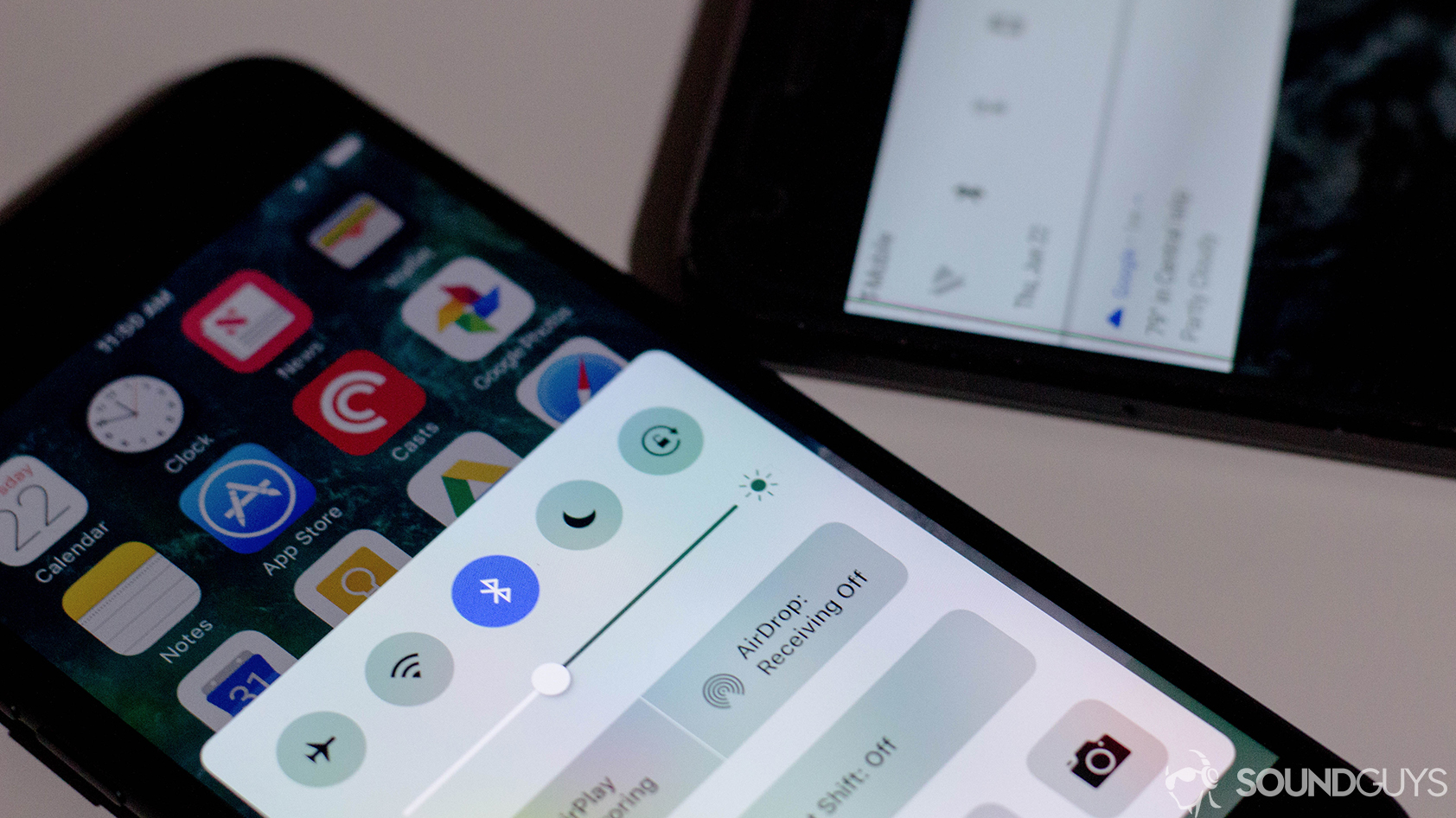
Whether you’re on Android, iOS, or any other operating system getting to Bluetooth settings is fairly simple.
Simply put, Bluetooth codecs are what your device uses to transmit audio to your headphones. The codec encodes sound data and sends it over the frequencies in which Bluetooth operates and decodes it upon arrival. It’s more complicated than that, but that’s the broad stroke—for a more in-depth look, consult our guide to understanding Bluetooth codecs.
Bluetooth codecs matter because they determine how good audio will sound and how reliable the connection between the playback device and your headphones will be. The reasons behind this are complex, but overall, Bluetooth makes a tradeoff between the amount of data that a device can cram into its signal space and the reliability of the connection. The more data you try and pack in, the less stable the connection becomes. Some headphone apps let you choose to prioritize connection stability over audio quality and vice versa.
As a result, different companies have released different codecs geared towards packing as much audio information into as little data as possible, hopefully to one day equal CD-quality audio while maintaining a solid connection. These continue to be refined as the Bluetooth standard itself is improved. However, none are currently equal to a wired connection or CD-quality sound. Here are all of the Bluetooth codecs available on the market as of writing, with their maximum supported Bitrate, Bit Depth, and Sample Rate:
| Bluetooth Audio Codec | Maximum Bitrate | Bit Depth | Maximum Sample Rate |
|---|---|---|---|
| Bluetooth Audio Codec
SBC |
Maximum Bitrate
320kbps |
Bit Depth
16-bit |
Maximum Sample Rate
48kHz |
| Bluetooth Audio Codec
aptX |
Maximum Bitrate
352kbps |
Bit Depth
16-bit |
Maximum Sample Rate
48kHz |
| Bluetooth Audio Codec
aptX HD |
Maximum Bitrate
576kbps |
Bit Depth
24-bit |
Maximum Sample Rate
48kHz |
| Bluetooth Audio Codec
aptX Adaptive |
Maximum Bitrate
279kbps-420kbps |
Bit Depth
24-bit |
Maximum Sample Rate
96kHz |
| Bluetooth Audio Codec
aptX Lossless |
Maximum Bitrate
1200kbps |
Bit Depth
24-bit |
Maximum Sample Rate
96kHz |
| Bluetooth Audio Codec
AAC |
Maximum Bitrate
264kbps |
Bit Depth
16-bit |
Maximum Sample Rate
44.1kHz |
| Bluetooth Audio Codec
LDAC |
Maximum Bitrate
990kbps |
Bit Depth
24-bit |
Maximum Sample Rate
96kHz |
| Bluetooth Audio Codec
LHDC |
Maximum Bitrate
900kbps |
Bit Depth
24-bit |
Maximum Sample Rate
96kHz |
| Bluetooth Audio Codec
Samsung Scalable Codec |
Maximum Bitrate
88kbps-512kbps |
Bit Depth
24-bit |
Maximum Sample Rate
44.1kHz |
| Bluetooth Audio Codec
LC3 |
Maximum Bitrate
345kbps |
Bit Depth
32-bit |
Maximum Sample Rate
48kHz |
How do you know which Bluetooth codecs your devices and headphones support?
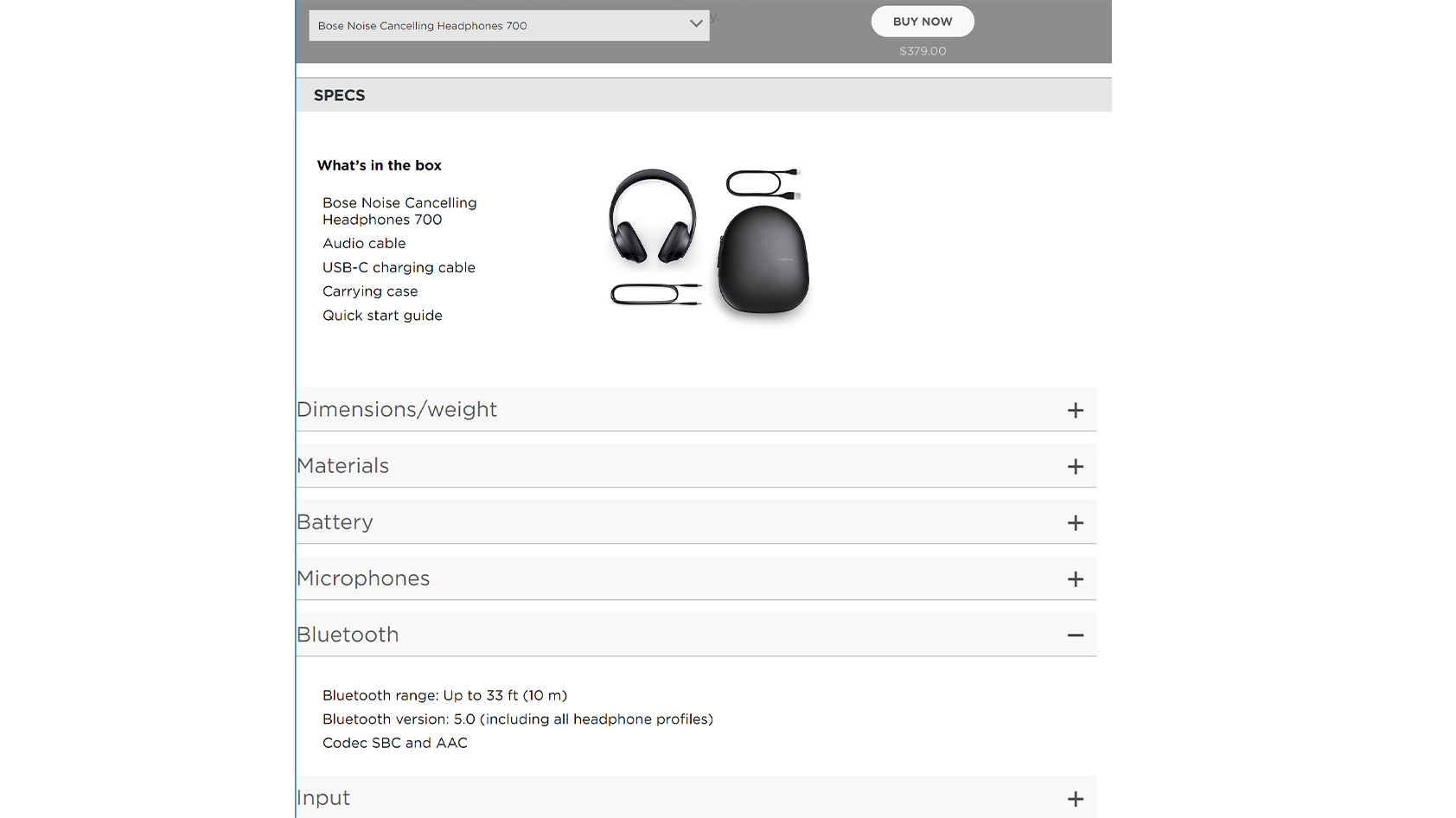
You can often find which Bluetooth codecs a pair of headphones supports on the manufacturer’s website.
Before you buy headphones willy-nilly, take a moment to learn which codecs your prospective headset supports. That involves checking the manual, specs pages, packaging, and other paperwork offered on manufacturers’ websites or going in-person and looking at the box. We’ll summarize what the terms mean later in this article, and you can always reference our guide again to check if the Bluetooth codecs supported by the headphones you wish to purchase are worth it.
However, if you already own a pair of headphones you like, but can’t find the box or manual, or that information isn’t available for a pair of headphones you want to buy, you can still find the answers you seek pretty easily. The process for checking the Bluetooth codec currently being used varies between devices, operating systems, and even software versions. Generally, here’s how you can do so on your phone or computer.
How to check Bluetooth codec support on Android
Generally speaking, aptX and even SBC provide more consistent streaming to Android devices than AAC.
To check which Bluetooth codec your Android phone is using, you must first enable developer options, if you haven’t already done so:
- Open the Settings app.
- Tap “About Phone.”
- Tap the Build Number seven times in a row.
Next, make sure that your Bluetooth headphones are synced to your phone and check the Bluetooth codec currently in use:
- Open the Settings app.
- Tap “System.”
- Choose “Developer options.”
- Tap “Bluetooth audio codec.”
If you want more Bluetooth codec customization on your Android device, you can check out the Bluetooth Codec Changer app on the Play Store. This app gives you advanced codec control including automatic codec switching, app-specific codec switching, and codec profiles.
How to check Bluetooth codec support on iOS
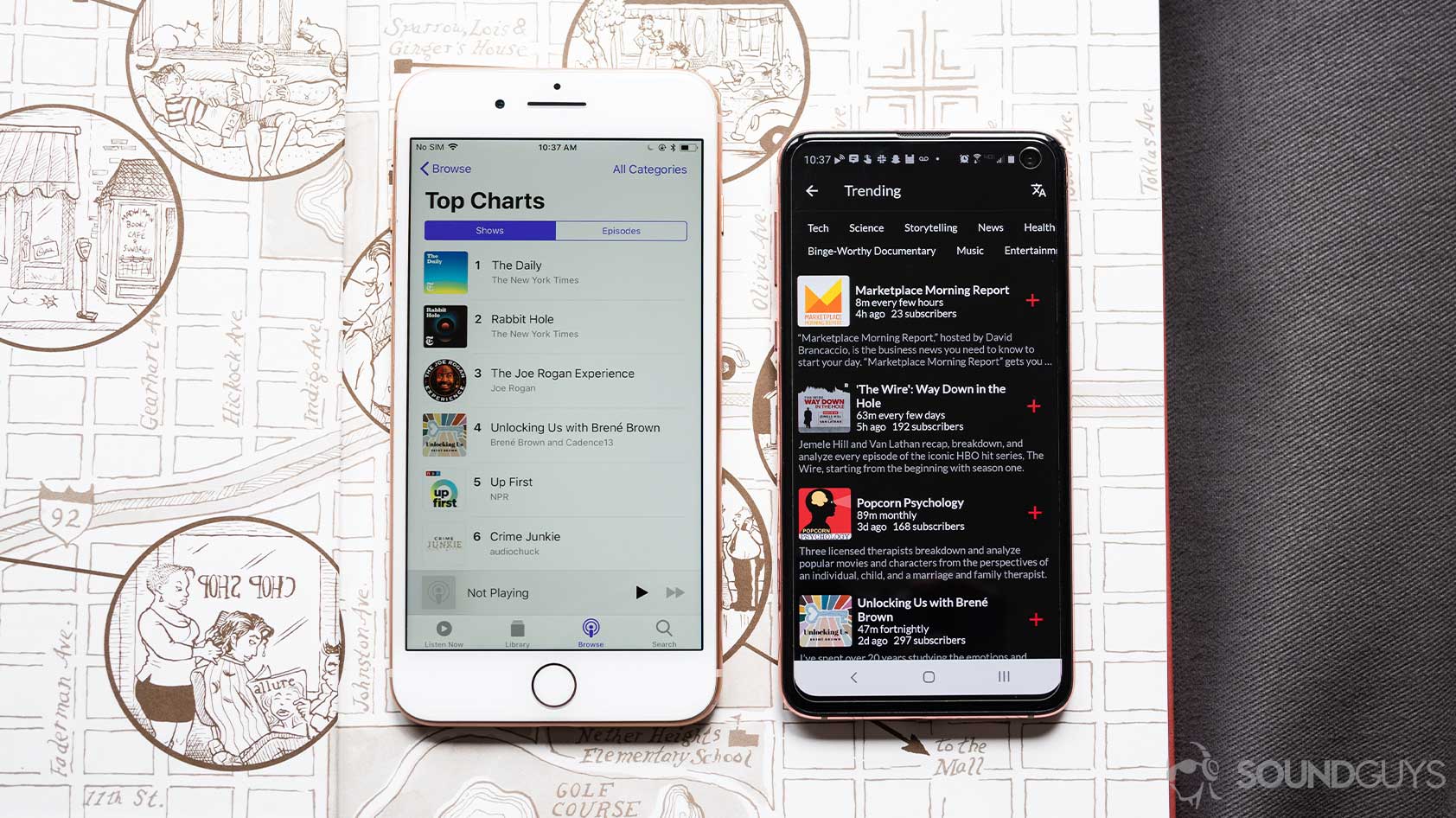
iPhones only support the AAC and SBC Bluetooth codecs.
Checking the currently used Bluetooth codec on an iPhone or iPad requires that you have a Mac available, too, and is more complicated. Apple devices use SBC or AAC. To double-check that, first, ensure that everything is synced up properly, then:
- Connect your iOS device to your Mac and mark it as a trusted device if asked.
- Open Console.app on your Mac.
- Select your iOS device from the list of available devices in the left-hand sidebar.
- Type in “Bluetooth” in the top-right search bar.
- Press Enter and choose “Subsystem” from the drop-down menu that appears.
- Play some audio on your iOS device and make sure it’s coming through the paired Bluetooth headphones.
- Turn off the Bluetooth on your iOS device, then back on again.
- Once the Bluetooth headphones and iOS device reconnect, you’ll see a message reading “Codec: AAC-LC” or similar.
Unlike on Android, you can’t change Bluetooth codecs on an iPhone or iPad. Apple’s own headphones and earbuds, such as the AirPods, only support AAC and SBC. We’ll cover why that’s bad news for anyone not immersed in the Apple ecosystem a bit later, but if you’re in the ecosystem AAC is tailor-made to your needs anyway.
How to check Bluetooth codec support on Windows 10
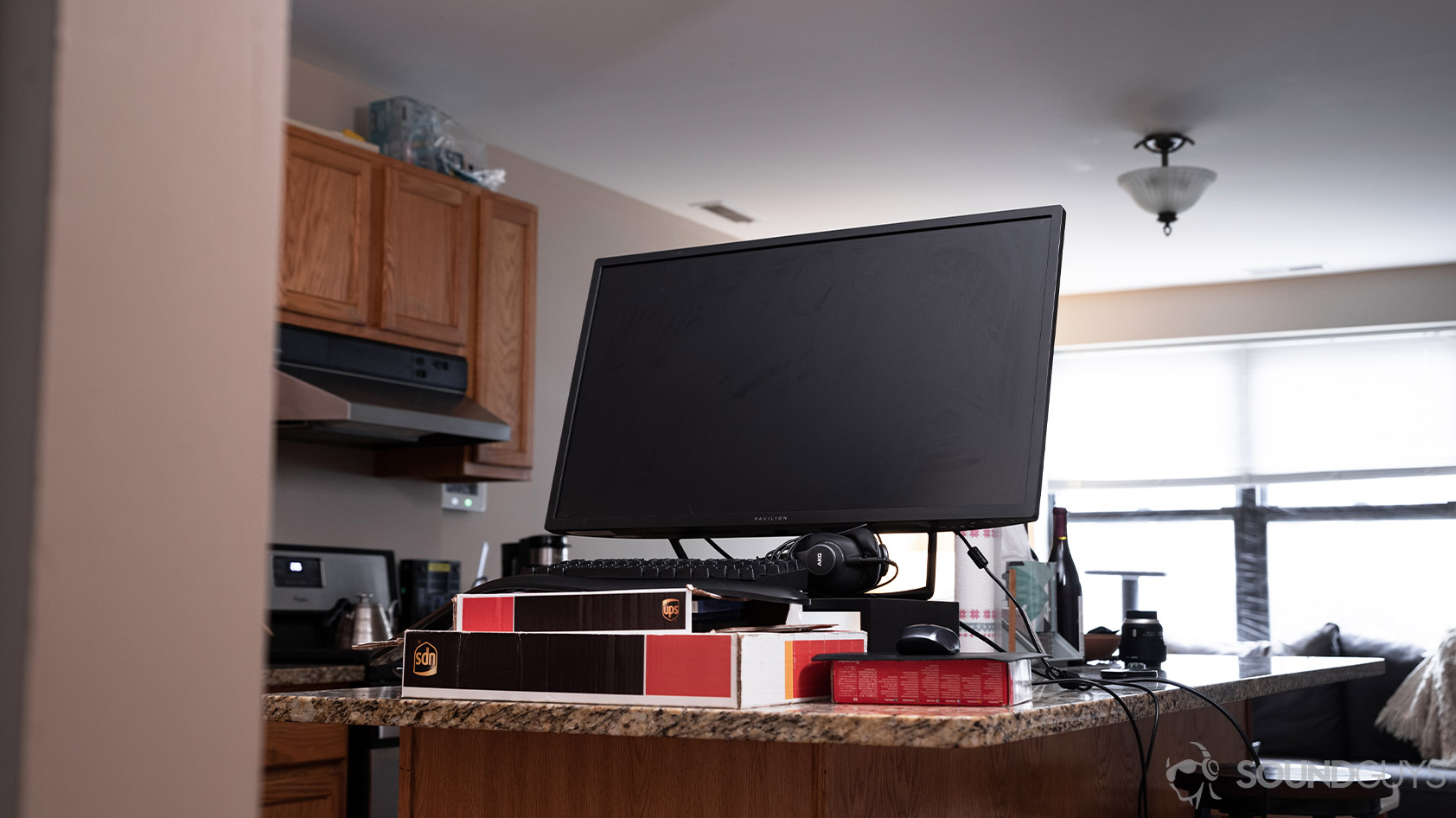
PCs don’t clarify which codec your headset and device are using.
Windows 10 does not offer an easy, standard method to check which Bluetooth codec is currently in use. You have to download third-party software, such as Bluetooth Tweaker, and follow the instructions to see which codec your Bluetooth headphones and Windows are using.
How to check Bluetooth codec support on macOS Monterey
Checking what codec you’re using on macOS Monterey is more difficult than before, but it can still be done.
- Open the Console app in the Utilities folder.
- In the search bar, look up “codec.”
- Press the Start button in the top bar.
- Connect the Bluetooth device to your computer.
- Look for a message in the logs that mentions codec type, and it should specify which one is in use. The message should look something like this:
bluetoothd A2DP configured at 44.1 KHz. Codec: AAC-LC, VBR max: 244 kbps. 1 frames * (12+709) bytes = 721 per RTP (max=879) every 23.22 ms
How to check Bluetooth codec support on macOS (Big Sur and earlier)
In older version of macOS, it was easier to see which Bluetooth codec you are currently using. First, ensure that your Bluetooth headphones are properly synced with your Mac. Before you can check the current Bluetooth codec status, you must also make sure the Bluetooth icon is visible in your menu bar:
- Open System Preferences.
- Click on “Bluetooth.”
- Click on “Show Bluetooth in menu bar.”
After that, you can check the Bluetooth codec currently in use:
- Start playing some audio on your Mac.
- Press and hold the Option key.
- While holding the Option key, click on the Bluetooth icon in the top menu bar.
- Hover your mouse cursor over the name of the Bluetooth headphones you’re currently using in the menu that appears.
- Another menu will pop up, and “Active Codec:” should be shown in gray.
You can’t change the Bluetooth codec in use here because that requires another tool, and we’ll cover that a bit later.
Which Bluetooth codecs should you use?
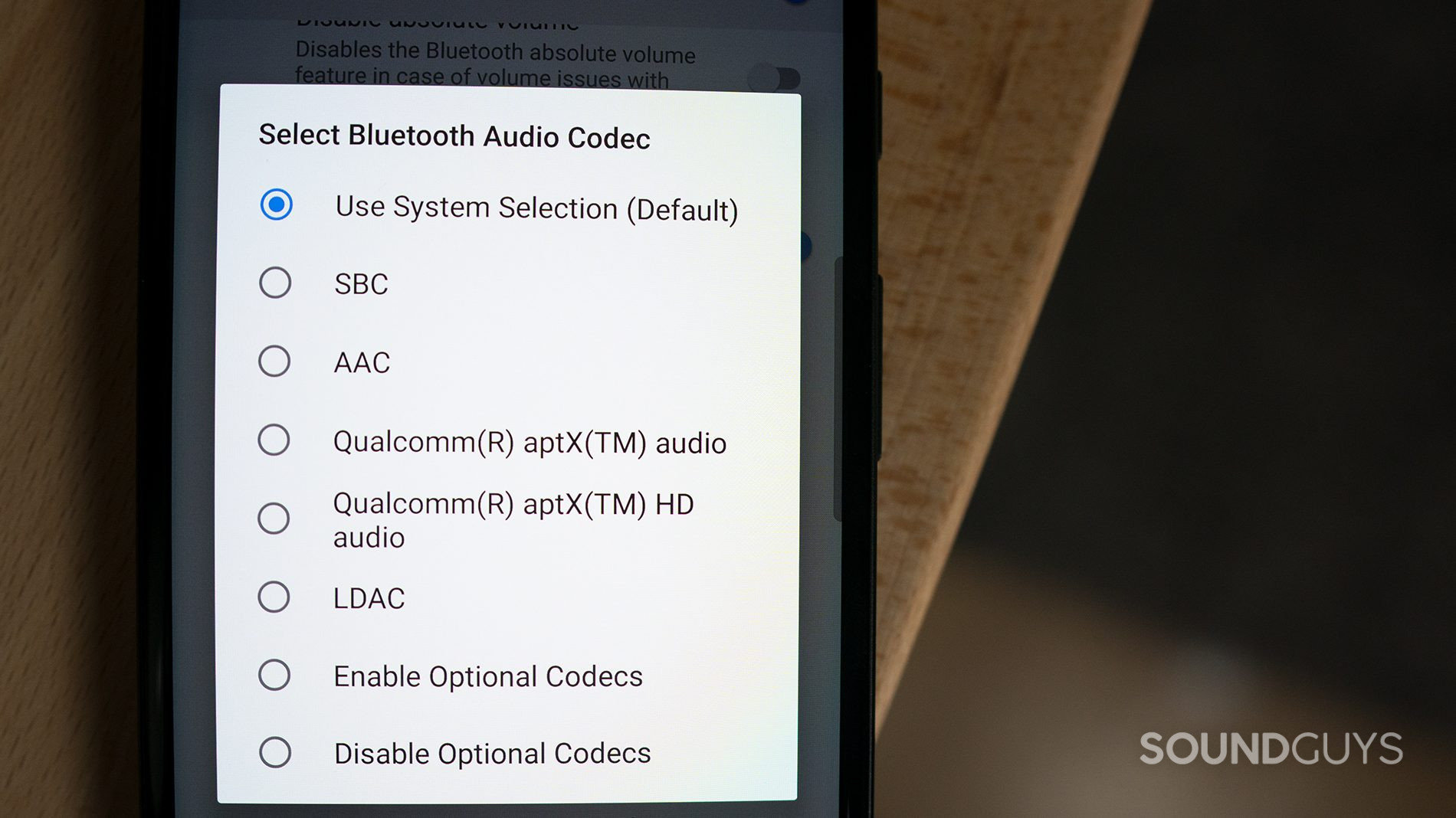
Not all Android devices treat AAC the same way.
In short, which Bluetooth codec to use depends on what you are listening to. Generally, playing video games or watching movies is best with as low latency as you can get. That means the least amount of audio-visual delay between when something happens in a game or movie, and when it makes it to your ears. This is not instantaneous because it takes time to encode and decode all that data—it’s partly why wireless gaming headsets use USB dongles instead of Bluetooth most of the time.
At SoundGuys, we usually recommend aptX, aptX LL, aptX HD, and aptX Adaptive Bluetooth codecs. In fact, aptX LL supports latencies as low as 40 milliseconds and faster. It helps that these Bluetooth codecs have the best quality Bluetooth audio currently available, too. However, they are not as widely adopted, and your headphones or playback device may not support them.
SBC will get the job done just fine if you’re staring down the barrel of an AAC connection on Android.
If that’s the case, opting for SBC is often the next best choice because it is available across Bluetooth-enabled devices. It doesn’t deliver the highest quality audio, but if that means the difference between getting sniped by a competitor or winning the game, you’ll have to make the tradeoff. If you game or watch movies using a Mac or iPhone, AAC presents a good choice for both latency and audio quality reasons but only for these devices. On Android, its performance is notoriously unreliable. Android, in general, also suffers from other Bluetooth latency issues. A recent update to Windows brought AAC support, but as we haven’t tested it, we can’t vouch for its performance.
Audio quality is a hairier question. As we’ve covered before, no Bluetooth codec currently available favorably compares to a wired connection or CD-quality audio. Whether you notice it depends on your hearing, the environment in which you’re listening, and the type of music you’re hoping to enjoy.
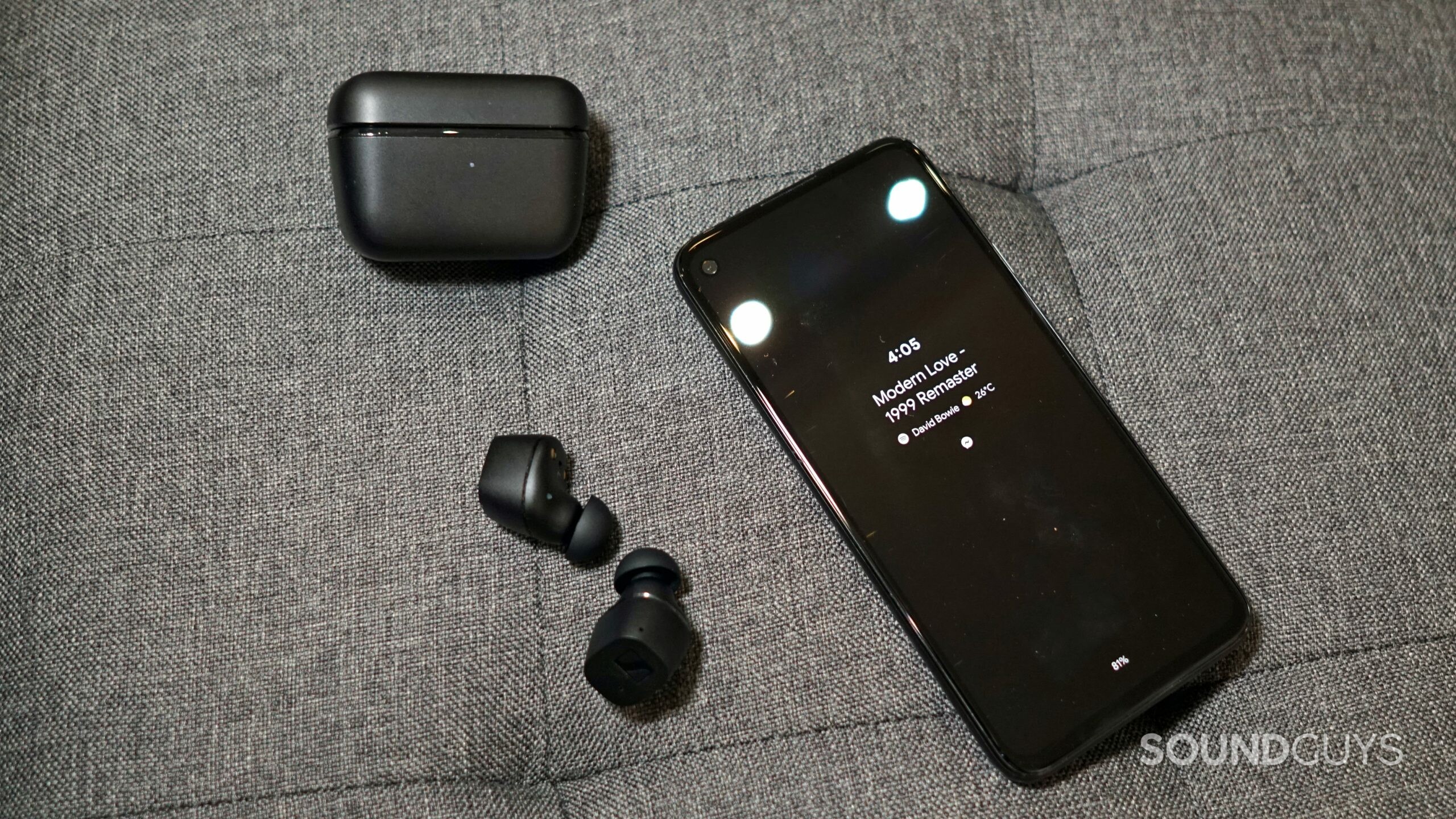
Lots of earbuds these days just use AAC and SBC, but if you look around a bit you can find something with more
In general, aptX, aptX LL, aptX HD, and aptX Adaptive provide the best quality of all the Bluetooth codecs found on the market today. Unfortunately, they may not be available across devices and software. LDAC is the next step down, and it’s even less common than aptX. Use 660kbps mode for optimum results. AAC delivers consistently decent audio quality only on Apple devices. Android phones from different manufacturers vary wildly in their performance with the codec. SBC doesn’t offer quality audio as good as the other options and you should avoid it, unless you use certain Android phones and the only other option is AAC.
Another thing to note is connection reliability. The fundamental problem with LDAC 990kbps mode (which is only available deep in the developer options of most devices, anyway) is that it tries to jam-pack too much data into the signal. As a result, you may experience breakups at distances as short as the one from your headphones to your smartphone in a pants pocket. However, the other codecs mentioned here are stable enough to withstand your daily commute or a walk around a desk with ease.
So, how do you change the Bluetooth codec currently in use?
How do you change between Bluetooth codecs?
How do you change Bluetooth codecs on Android?
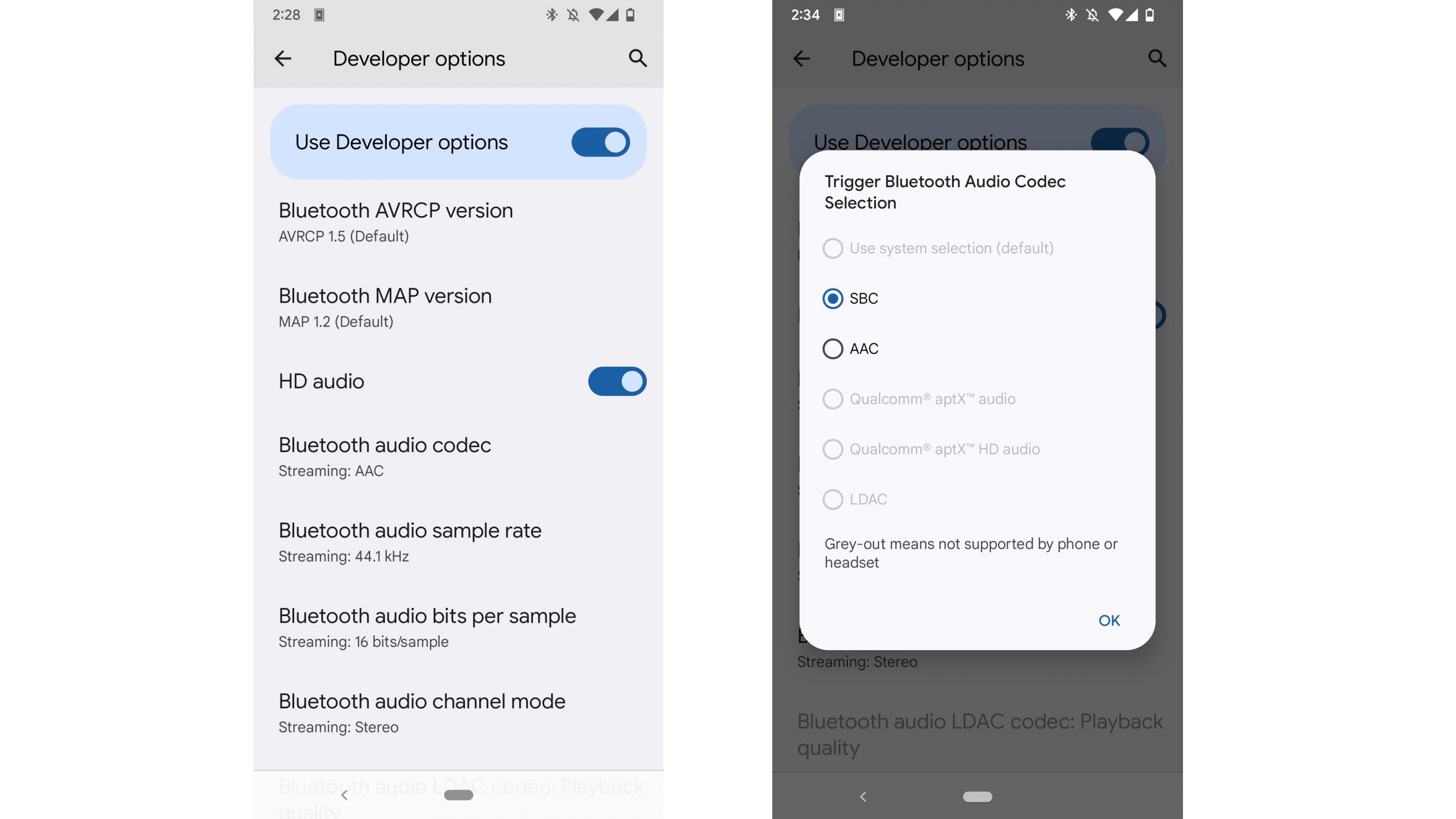
Android phones offer an easy way to check which Bluetooth codec is in use and change between them.
Follow the same instructions from above to check which Bluetooth codec your Android phone currently uses and ensure that developer options are enabled. Changing the active codec is relatively simple after that. First, make sure that you’ve synced your Bluetooth headphones to your phone, and then:
- Open the Settings app.
- Tap “System.”
- Select “Developer options.”
- Select “Bluetooth audio codec.”
- Tap the Bluetooth codec you wish to use, or tap “Ok” to exit without making changes (unavailable ones will be grayed out).
How do you change Bluetooth codecs on an iPhone?
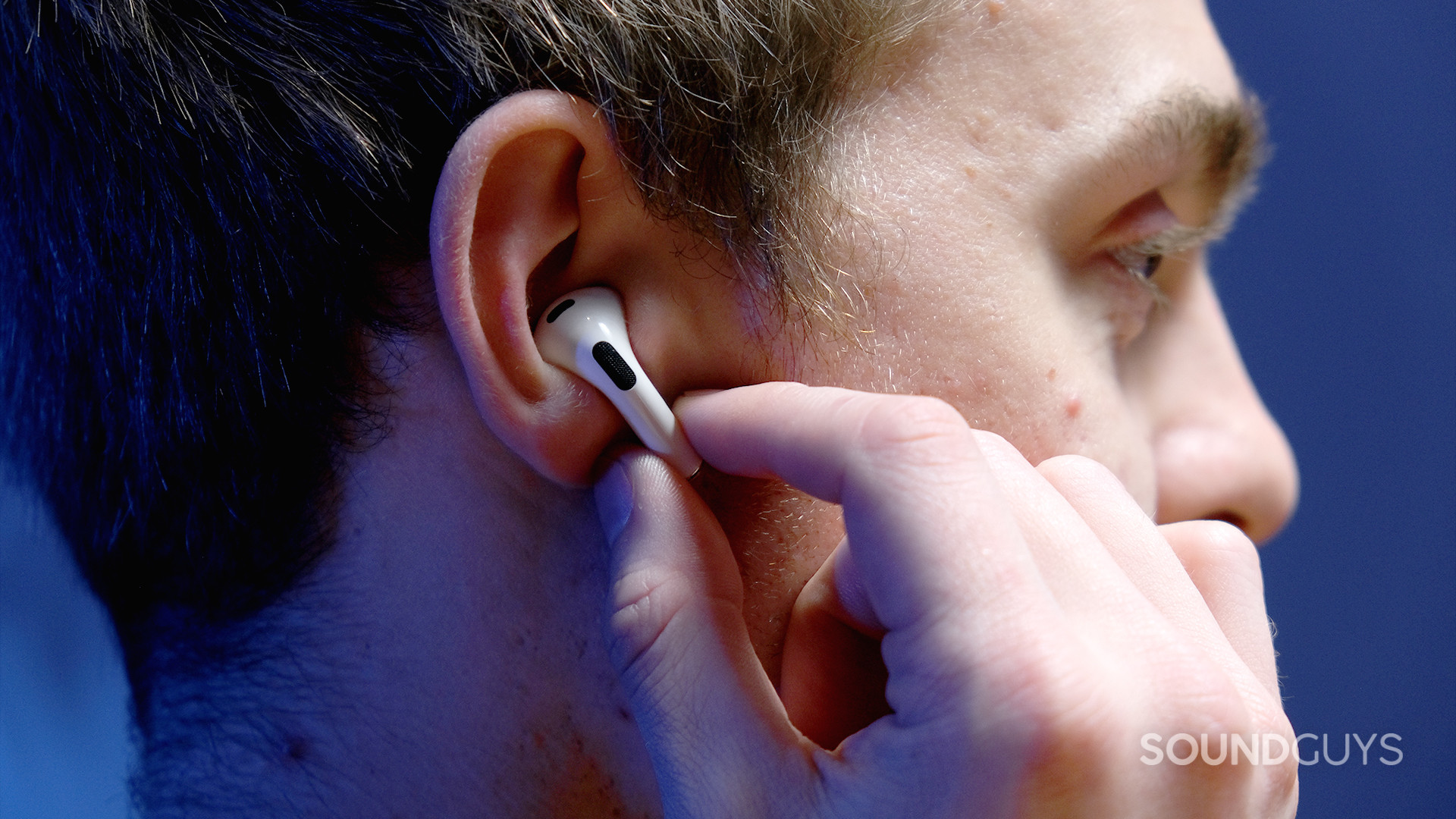
If you use something like the Apple AirPods (3rd generation) with an iPhone, the phone will default to AAC.
Apple’s headphones or earbuds only support the AAC and SBC Bluetooth codecs. Apple’s implementation of the AAC standard is acceptable for both latency and audio quality purposes on iOS. If you’re using third-party headphones, the manufacturer needs to offer an iOS app that lets you change the Bluetooth codec. Check their website and the manual that came with your headphones to be sure.
How do you change Bluetooth codecs on Windows 10?
Much like checking to see which of them is in use, Windows 10 does not offer an easy, standard method to change between Bluetooth codecs, either. You must download third-party software, such as Bluetooth Tweaker, and follow their instructions. However, if Windows 10 detects that your Bluetooth headphones support aptX, it should notify you it switched to that codec automatically.
How do you change Bluetooth codecs on macOS?
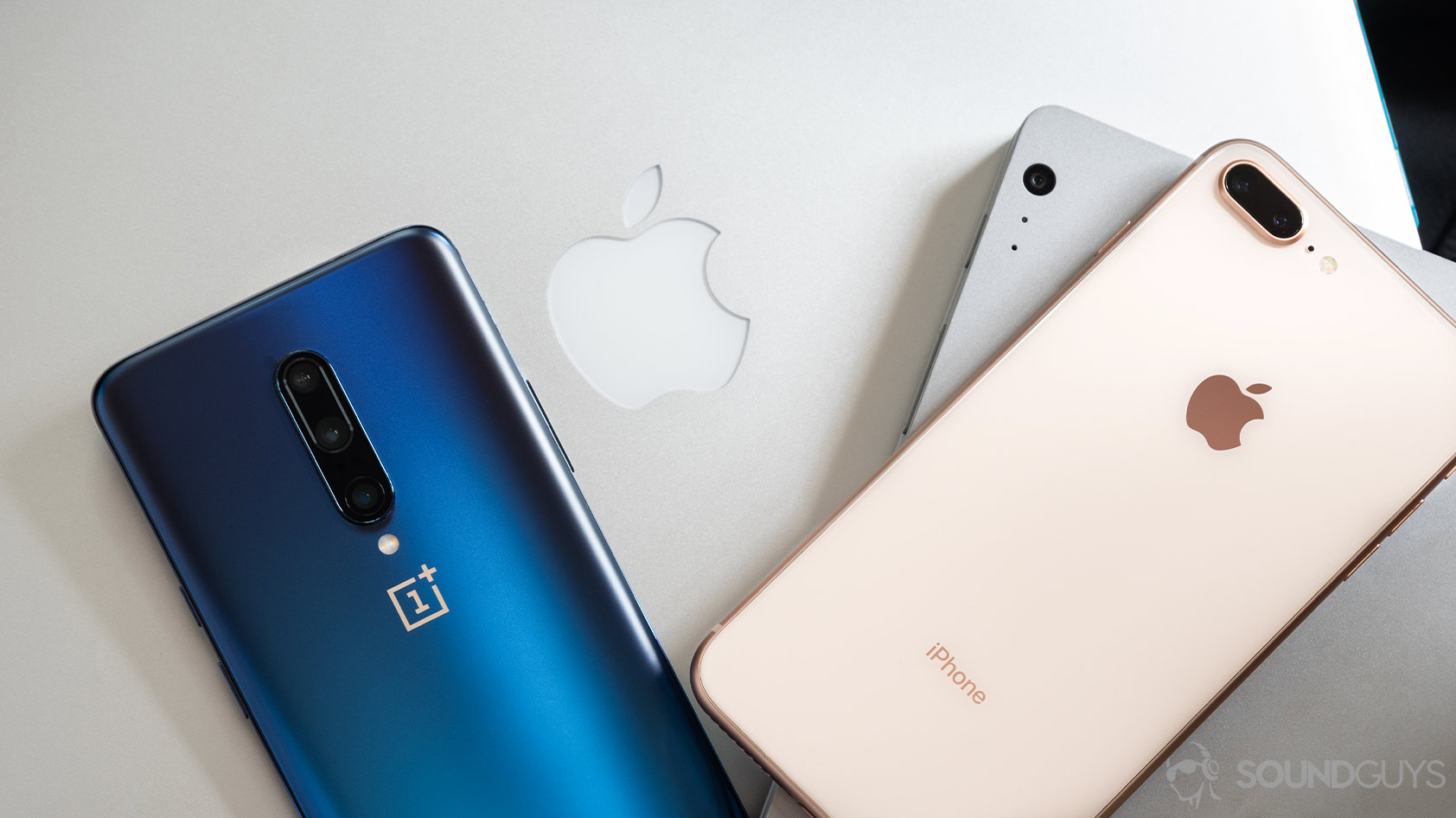
Every modern wireless device will support Bluetooth in some capacity, even if it’s relatively outdated (e.g., Bluetooth 4.1).
It used to be the case that you could download the Bluetooth Explorer app from the Xcode Additional Tools to be able to change Bluetooth codecs on macOS. This is no longer the case as of 2020, and you can’t even change codecs if you already downloaded Bluetooth Explorer before it was made unavailable.
Frequently asked questions
Which codecs you can connect with when using Bluetooth multipoint depends on the device. For example, the Sony WH-1000XM4 only supports multipoint over the SBC or AAC codecs, and you can’t use LDAC and multipoint, and this seems to be true for a number of devices that support the LDAC codec as well. To be sure that the headphones you have or want to purchase support multipoint over certain codecs, you will have to check the manual or search online for the answer for that specific device, as there is no set standard for this.
No, typically Bluetooth codecs are not added as firmware updates, as they require specific hardware. Do not purchase a product assuming it will add more Bluetooth codec support in the future.
Все способы:
- Шаг 1: Скачивание и установка драйвера
- Шаг 2: Обновление ОС
- Шаг 3: Определение, есть ли поддержка AptX
- Альтернативное решение
- Вопросы и ответы: 0
Шаг 1: Скачивание и установка драйвера
Чтобы кодек заработал в операционной системе Windows 10 (при условии, что он поддерживается), достаточно скачать и установить актуальную версию драйвера для Bluetooth-модуля. Сделать это можно несколькими способами, в том числе с помощью вспомогательной утилиты от производителя или стороннего программного обеспечения. Кроме того, свежая версия ПО есть на официальном сайте компании-изготовителя, откуда его можно скачать бесплатно, а иногда могут помочь и предустановленные в ОС инструменты. Обо всех способах инсталляции драйвера для BT-адаптера читайте в нашем отдельном руководстве на сайте.
Подробнее: Поиск и инсталляция драйверов для Bluetooth-адаптера в Windows 10
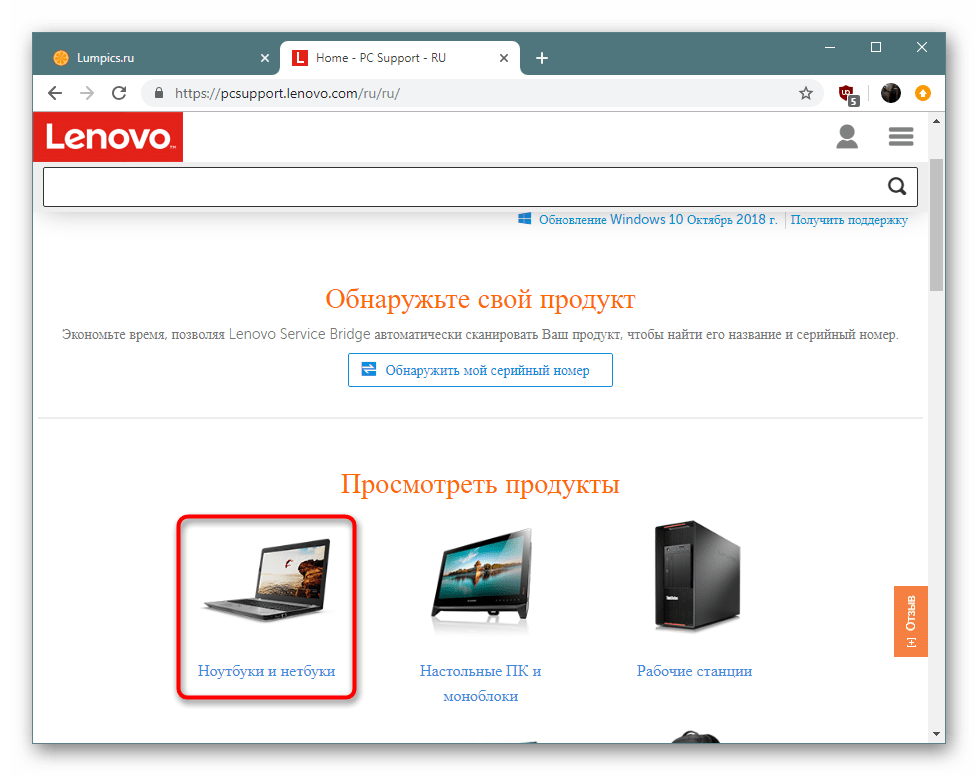
Шаг 2: Обновление ОС
Более ранние версии операционной системы Windows (в частности, 7 и 
Подробнее: Обновление Windows 10 до последней версии
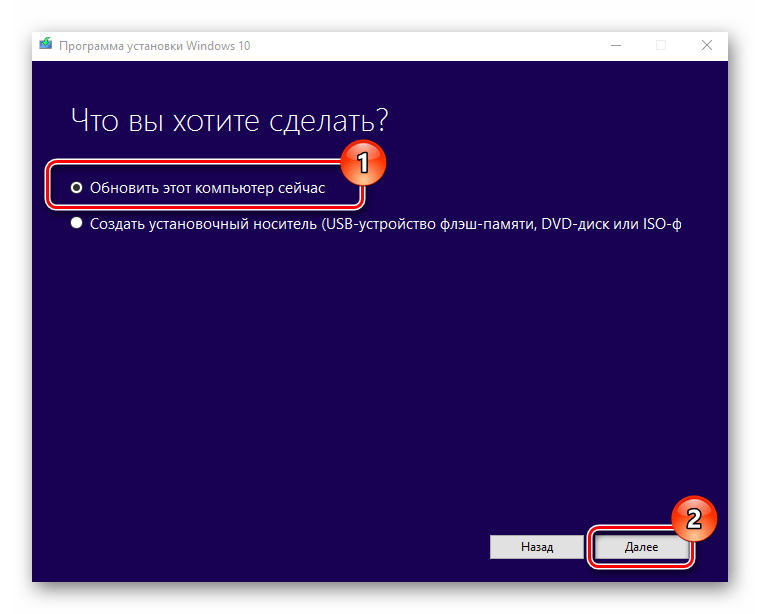
Шаг 3: Определение, есть ли поддержка AptX
В отличие от ранних версий Windows (7 и 8), в «десятке» уже по умолчанию реализована поддержка кодека AptX, в особенности на новых ноутбуках, где интегрирован Bluetooth-модуль. Но понять, что он работает, с помощью встроенных средств, к сожалению, невозможно – при подключении беспроводных наушников никаких уведомлений и сообщений об этом не отобразится.
Если же у вас внешний Bluetooth-адаптер или устаревший ноутбук, потребуется выяснить, поддерживает ли он кодек. Для этого нужно установить дополнительную утилиту – Bluetooth Tweaker.
Скачать Bluetooth Tweaker с официального сайта
- Перейдите по ссылке выше и загрузите инсталляционный файл, после запустите его и следуйте инструкциям пошагового мастера установки. После инсталляции нужно перезагрузить компьютер, чтобы новые параметры вступили в силу.
- Предварительно подключите наушники (гарнитуру) к компьютеру беспроводным способом, затем запустите утилиту и на панели слева выберите подключенное устройство, а в центральной части окна можно увидеть некоторую информацию о нем, в том числе о поддерживаемых кодеках. Кликните по кнопке «Refresh CODEC Information» для обновления сведений.
- Теперь можно увидеть, какие кодеки поддерживаются наушниками – отыщите в нем AptX. Ниже есть информация о том, какие кодеки сейчас использует сама операционная система – если есть нужный вариант (пункт «CODEC Type»), значит, никаких действий не требуется, и ОС автоматически выбрала кодек с наиболее качественным звучанием.
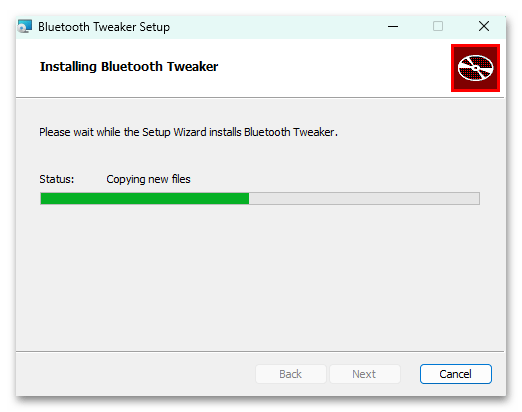
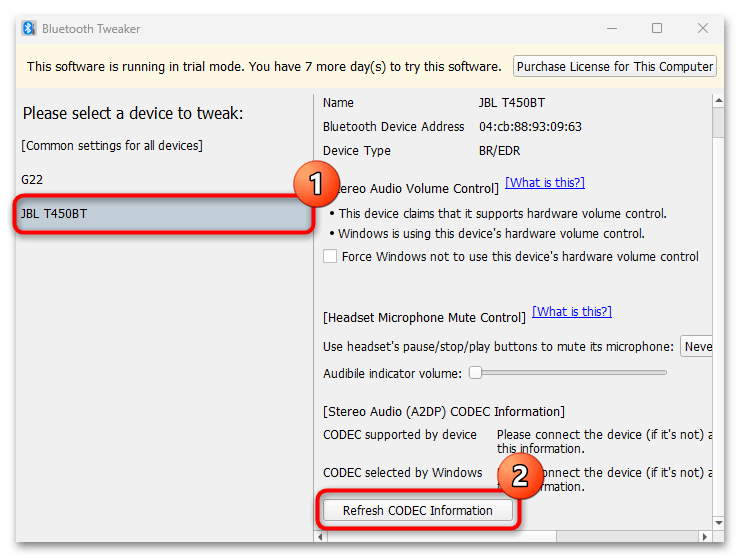
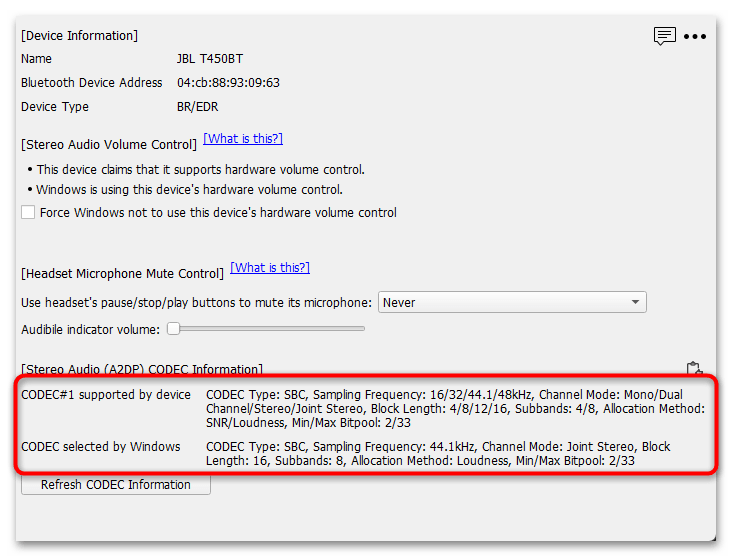
Кстати, соответствующая информация может быть на официальном сайте производителя адаптера – найдите там модель и ознакомьтесь с ее характеристиками.
Альтернативное решение
Windows 10 поддерживает работу с AptX из коробки, но также есть и другие разновидности кодека (AptX LL и AptX HD). Если наушники или гарнитура поддерживают данные стандарты, то с операционной системой может быть не все так просто. Например, для полноценного использования AptX LL для получения наименьшей задержки потребуется дополнительный компонент — USB AptX LL, который подключается через разъем USB компьютера/ноутбука.
В случае с AptX HD все намного сложнее – даже, если наушники поддерживают такой кодек, то для компьютера и его модуля Bluetooth, скорее всего, потребуется приобрести специальное оборудование – Bluetooth-трансмиттер, представляющий собой небольшое устройство в виде коробочки, которое подключается к ПК с помощью 3.5 мм разъем или SPDIF, но при этом передает звук по Bluetooth.
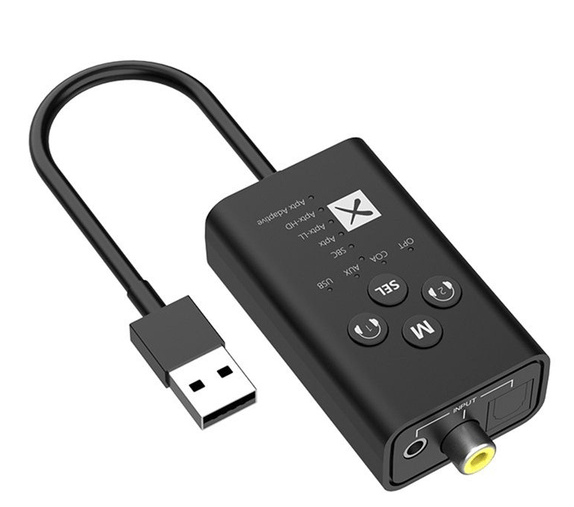
Кстати, для трансмиттера не требуются никакие драйвера и дополнительный софт, поэтому подключить его можно к любому устройству, где есть нужные разъемы. Но, как правило, при использовании такого оборудования управление кнопками на наушниках не поддерживается, а встроенный микрофон перестает работать.
Наша группа в TelegramПолезные советы и помощь
